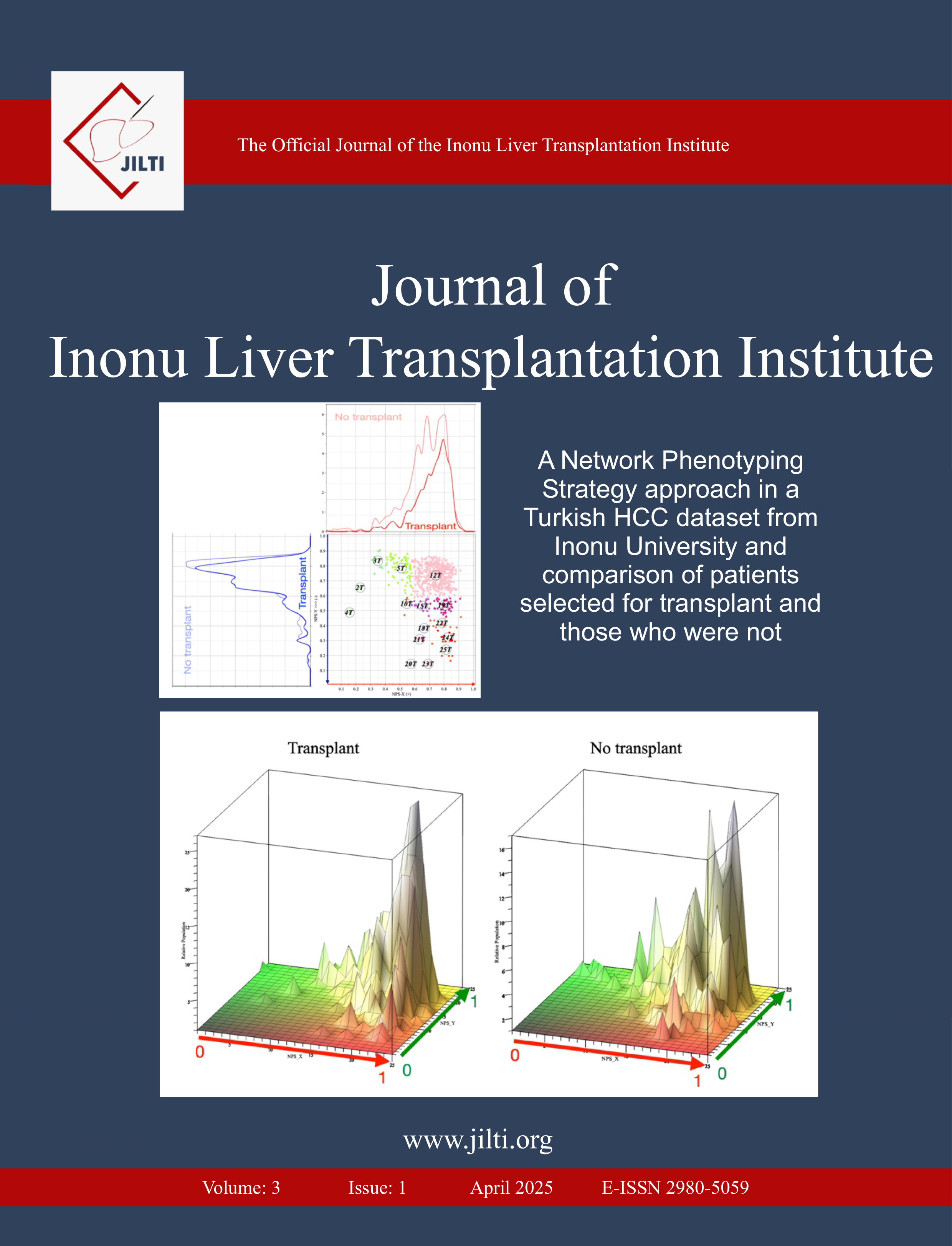Gallbladder Cancer in a Liver Transplant Patient
Yasin Dalda1, Volkan Ince1, Mehmet Ozcan2, Ozlem Dalda2, Tevfik Tolga Sahin1, Sezai Yilmaz11Department of General Surgery and Liver Transplantation Institute, Inonu University Faculty of Medicine, Malatya, Türkiye2Department of Pathology, Inonu University Faculty of Medicine, Malatya, Türkiye
Gallbladder cancers are relatively rare malignancies. While early-stage cases can achieve good outcomes with cholecystectomy, the 5-year survival rate in advanced stages is extremely low. Primary sclerosing cholangitis is a progressive liver disease characterized by inflammation of the bile ducts and is associated with an increased risk of gallbladder cancers. A 32-year-old male patient with primary sclerosing cholangitis was referred for liver transplantation. Imaging revealed a suspicious polypoid lesion, 2.5 cm in diameter, in the gallbladder. With a Meld score of 30, the patient was placed on the transplant waiting list. After waiting period of one month a deceased donor liver transplant was performed. The hepatectomy specimen revealed T2 gallbladder cancer. No recurrence or metastasis was detected during 1 year of follow-up. There is no consensus on the management of suspicious gallbladder lesions in patients with primary sclerosing cholangitis. Cholecystectomy in these patients carries a risk of decompensation in cirrhosis. Considering the decompensated liver cirrhosis and high Meld score, we preferred transplantation over cholecystectomy. Therefore, liver transplantation can be considered as primary treatment option instead of cholecystectomy.
Keywords: Gallbladder cancer, primary sclerosing cholangitis, liver transplantation.Manuscript Language: English


